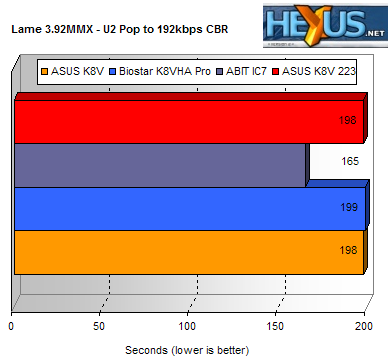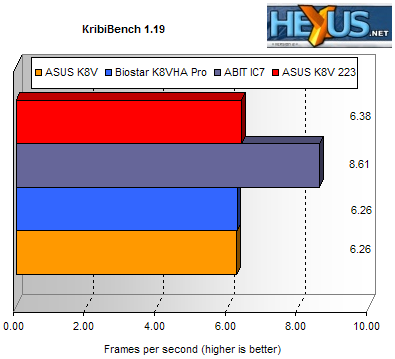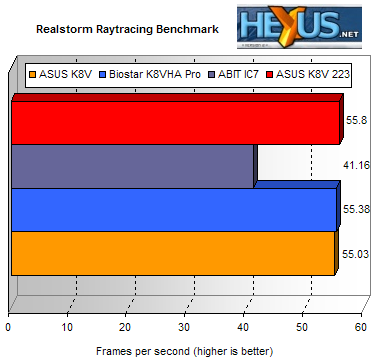CPU Tests
LAME 3.92MMX, encoding U2's excellent Pop album from 16-bit, 44.1kHz .wav source, to 192Kbps CBR MP3. L2 cache performance has little bearing on this result, with cache deficient Celeron P4s able to keep pace with their identically clocked Northwood brethren. It's all about a SIMD unit that runs at massive speed, that's the key to good MP3 media encoding performance with LAME.
The Biostar runs a second out from the K8V results, but that's statistical anomaly, not any indication of slower performance on its part. LAME loves the SIMD unit on a fast clocked P4 as you can see, media performance is its forte, rather than more traditional CPU calculations.
The Kribi Project aims to create a software only 3D renderer that executes completely on the CPU, rather than take advantage of any graphics cards in the system. This makes it perfect as a CPU test.

~37% faster for the Pentium 4, for 60% extra raw clock speed means that we're probably scaling almost entirely with the performance of the SIMD units on the CPU here. The small increase in performance when running at 9 x 223 with the ASUS alludes to that too. While the AMD has a faster SSE2 implementation than the P4, at the same clock speed, 3.2GHz gives the P4 the edge here. Raw clock speed does help in some situations.
The Realstorm ray tracer is our final CPU bound, non 3D, test. It's much more sensitive to L2 performance, rather than final CPU speed or main memory latencies. Look for the Athlon 64 systems to show the P4 how a software raytracer should be run.

The Biostar shades the K8V when both run at stock CPU speed, 9 x 233 on the ASUS brings it back in the end. There's no real difference between both Athlon 64 systems and all three configurations show the P4 who's boss. Horses for courses.









